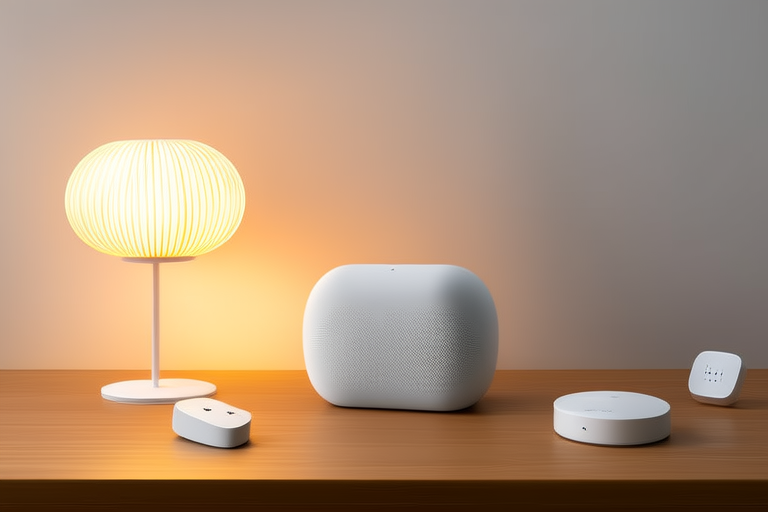“`html
A Beginner’s Guide to Building a Seamless Smart Home
Introduction
A smart home is an environment where technology and everyday objects are interconnected, allowing you to control and automate various aspects of your living space. From lighting and heating to security systems and entertainment, a smart home integrates these elements into a cohesive, efficient, and convenient ecosystem.
Building a seamless smart home offers numerous benefits, including increased energy efficiency, enhanced comfort, and improved security. It allows you to manage your home remotely, customize settings to suit your preferences, and even save money on utilities over time. Key components of a smart home include smart bulbs, thermostats, door locks, cameras, and speakers, all of which communicate through wireless networks and can be controlled via mobile apps or voice commands.
Understanding the Basics
A smart home system typically consists of various devices that connect wirelessly to form a network. These devices can range from simple switches and sensors to more complex systems like smart thermostats and security cameras. The primary function of these devices is to make your home more convenient and efficient by automating tasks and providing real-time information.
Smart home devices can be broadly categorized into lighting, thermostats, security systems, and entertainment. Lighting systems allow you to control lights remotely, adjust brightness, and even change colors. Thermostats enable you to monitor and regulate temperature, reducing energy consumption. Security systems offer features like motion detection, door and window sensors, and video surveillance. Entertainment systems encompass audio and video devices that can be controlled centrally.
These devices communicate through various protocols, such as Zigbee, Z-Wave, and Wi-Fi. Each protocol has its strengths and weaknesses, but they all aim to facilitate seamless communication between devices within the home.
Choosing the Right Devices
Selecting the right smart devices requires careful consideration of your needs and preferences. Start by identifying the areas of your home where you want to introduce automation. For example, if you frequently forget to turn off lights, consider installing smart bulbs. If you’re concerned about security, invest in a reliable camera system.
Popular brands like Philips Hue, Nest, and Ring offer a wide range of products across various categories. When choosing devices, prioritize ease of use, cost-effectiveness, and future-proofing. Look for products that are intuitive to operate and compatible with other devices in your home. Additionally, consider whether the devices you choose will still be supported by the manufacturer in the future.
Setting Up Your Network
A robust Wi-Fi network is essential for a seamless smart home experience. Ensure that your router provides strong signal coverage throughout your home. This may require investing in a mesh network system, which consists of multiple nodes that extend the Wi-Fi signal to hard-to-reach areas.
When selecting a router, look for one with advanced features like MU-MIMO (Multi-User Multiple Input Multiple Output) and beamforming, which improve performance by handling multiple devices simultaneously and focusing the signal towards connected devices.
Ensuring Compatibility
Interoperability is crucial when building a smart home. Devices need to communicate seamlessly to provide a cohesive user experience. Common standards like Zigbee, Z-Wave, and Wi-Fi enable devices from different manufacturers to work together.
To avoid compatibility issues, it’s important to choose devices that adhere to the same communication protocol. Many smart home hubs support multiple protocols, allowing you to integrate devices from various manufacturers. Always check the compatibility of new devices before purchasing them to ensure they will work with your existing setup.
Integrating Voice Assistants
Voice assistants like Amazon Alexa, Google Assistant, and Apple Siri offer hands-free control of smart home devices. They can be integrated into your smart home setup to perform a variety of tasks, from adjusting the thermostat to locking doors.
To set up a voice assistant, start by downloading the corresponding app and following the installation instructions. Once installed, link your smart home devices to the assistant through the app. You can then create custom voice commands and automations to streamline your daily routine.
For example, you could set up a “good morning” routine that turns on lights, adjusts the thermostat, and plays music as soon as you wake up. Similarly, a “bedtime” routine could dim the lights, lock the doors, and turn off all devices.
Automating Your Home
Creating routines and automations is a key aspect of building a seamless smart home. Routines allow you to group actions together, so they happen automatically at specific times or under certain conditions.
Examples of useful automations include turning on lights when you enter a room, adjusting the thermostat when you leave the house, or playing music when you sit down to relax. Many smart home hubs and apps provide tools for creating and managing automations. Start by identifying tasks you perform regularly and think about how you can automate them to save time and effort.
Security and Privacy Considerations
Securing your smart home is critical to protecting your personal information and preventing unauthorized access. Strong passwords and regular updates are essential for maintaining security. Use unique, complex passwords for each device and update firmware and software regularly to patch any vulnerabilities.
Data privacy is another concern to consider. Be mindful of what information your devices collect and how it is stored and shared. Some devices may transmit data to third-party servers, so review privacy policies and settings carefully. Consider using encryption and two-factor authentication to enhance security further.
Troubleshooting Common Issues
Common issues that users may encounter while setting up their smart homes include connectivity problems, device malfunctions, and compatibility issues. To address these, first ensure that your network is functioning properly and that all devices are connected to the correct network. Restarting your router and resetting devices can often resolve connectivity issues.
If a device is malfunctioning, consult the manufacturer’s support resources for troubleshooting tips. Updating firmware and software can also fix bugs and improve performance. When adding new devices, double-check compatibility and follow installation instructions carefully to prevent conflicts with existing devices.
Conclusion
Building a seamless smart home involves integrating various devices and systems to create a convenient, efficient, and secure living environment. By understanding the basics, choosing the right devices, setting up a reliable network, ensuring compatibility, and prioritizing security and privacy, you can create a smart home that enhances your daily life.
Don’t hesitate to explore and experiment with your smart home setup. As technology evolves, new features and capabilities will become available, offering even more opportunities to personalize and optimize your living space. For further learning and support, consider joining online communities, reading reviews, and consulting expert guides.
“`


